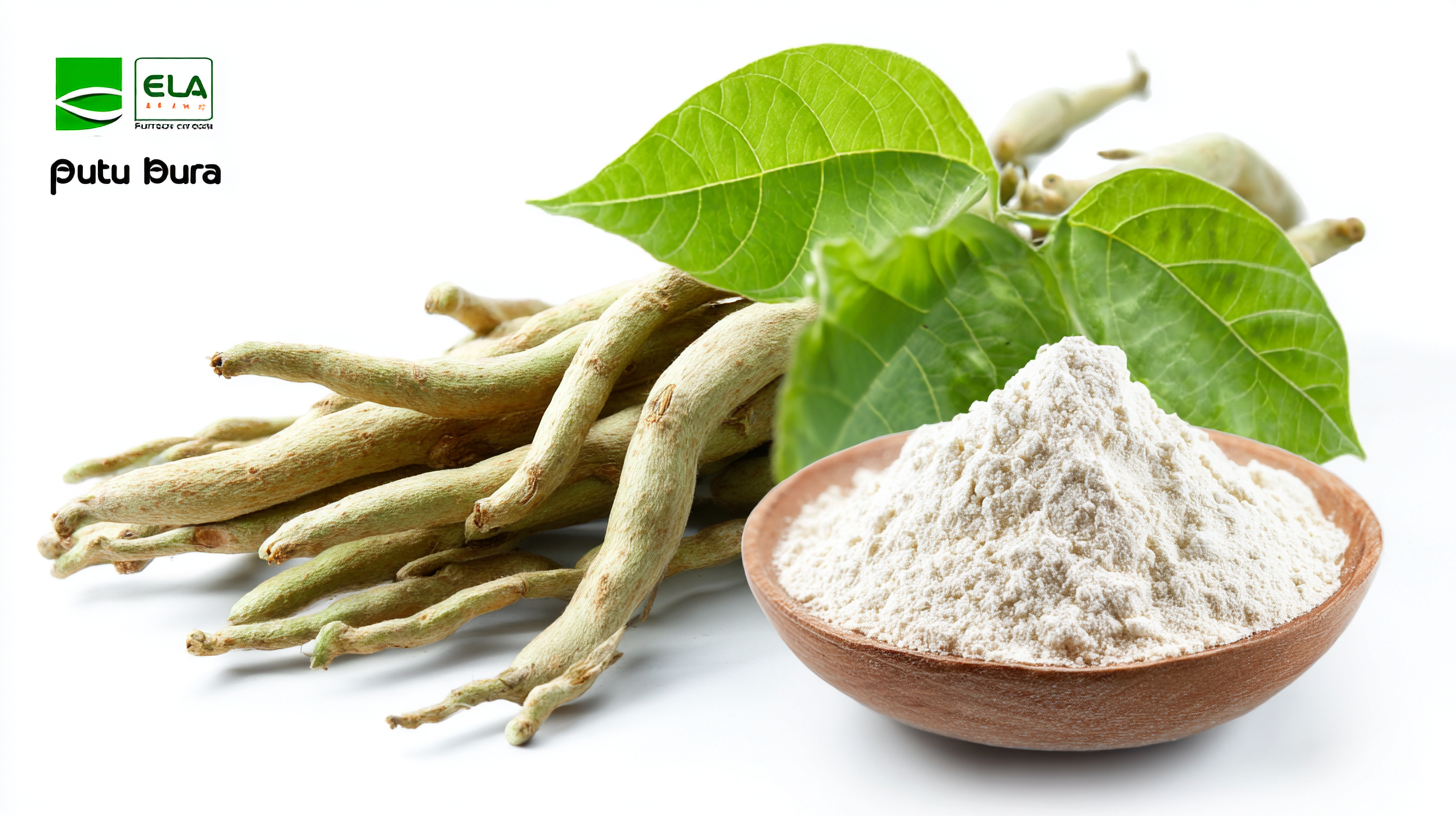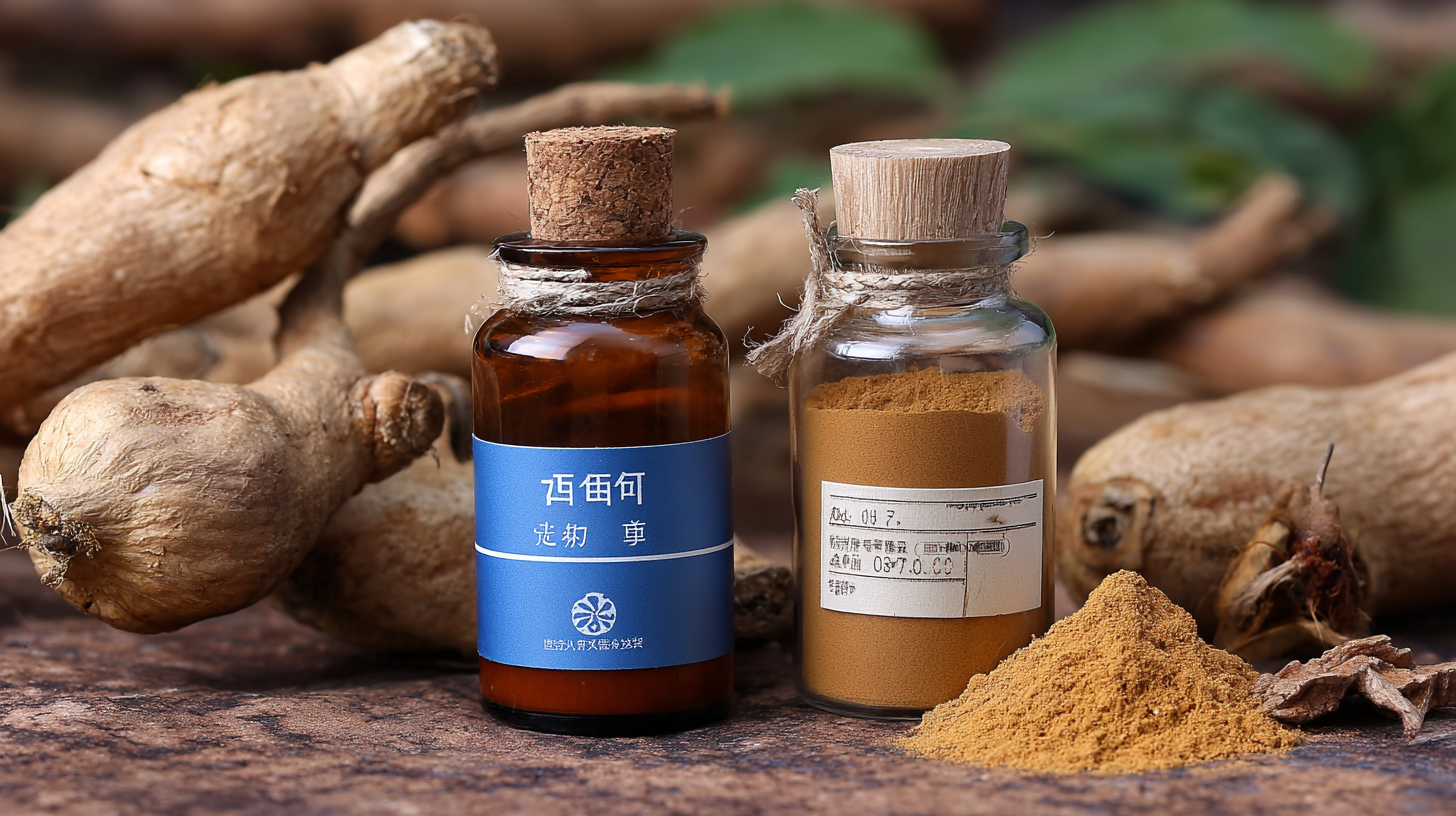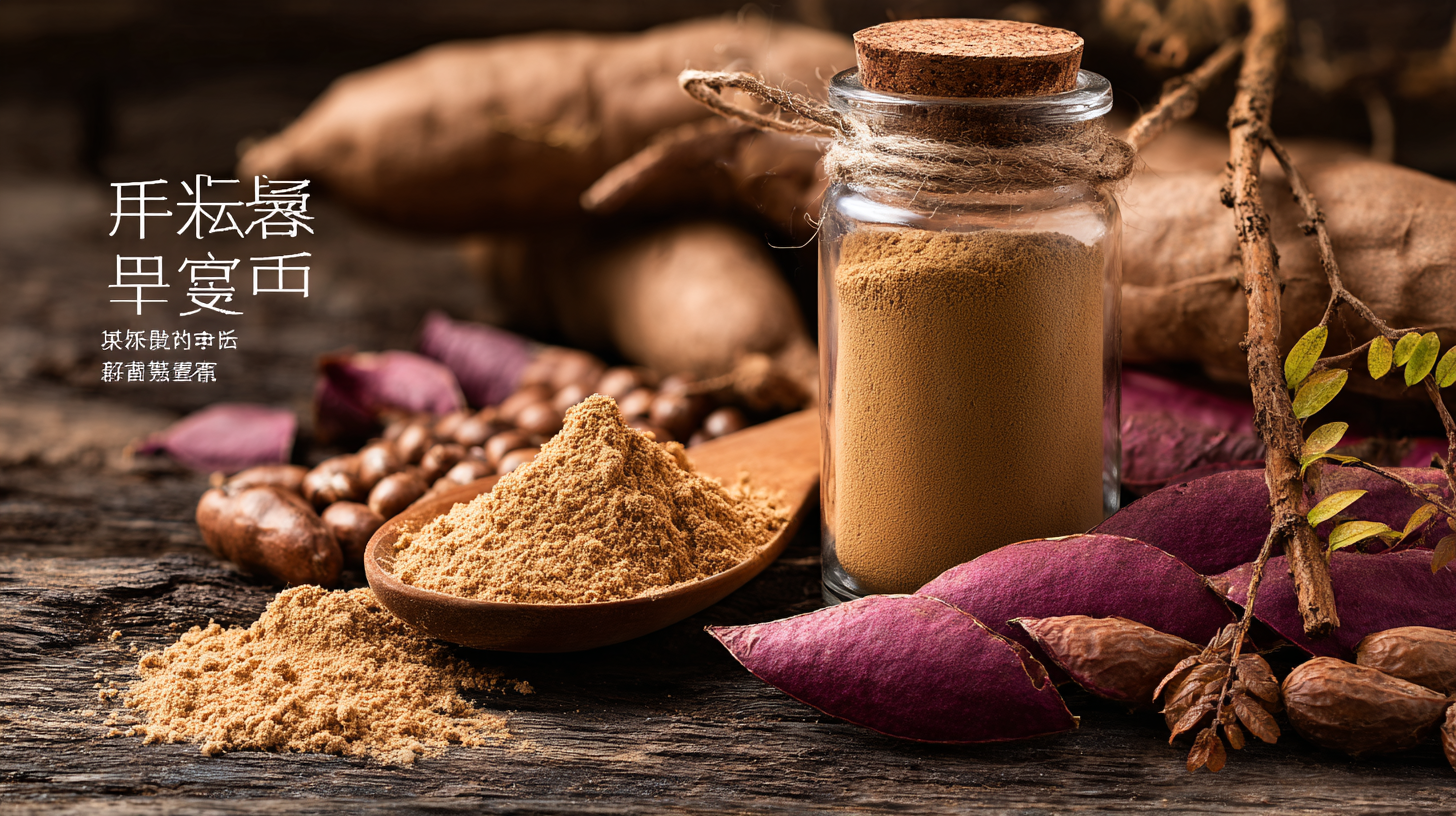 In recent years, the demand for Pueraria Lobata Extract has surged globally, driven by increasing consumer awareness of natural health products and their benefits. According to a report by Grand View Research, the global market for herbal supplements, including Pueraria Lobata, is expected to reach USD 189.4 billion by 2025, growing at a CAGR of 7.0%. This surge can be attributed to the rising popularity of products associated with weight management, hormonal balance, and skin health, where Pueraria Lobata Extract plays a key role. However, as the market expands, understanding the production standards for high-quality Pueraria Lobata Extract becomes crucial, ensuring efficacy and safety for consumers. With notable variations in quality, methods of extraction, and processing, it’s essential for manufacturers to adhere to best practices to establish reliability and consumer trust in this valuable botanical extract.
In recent years, the demand for Pueraria Lobata Extract has surged globally, driven by increasing consumer awareness of natural health products and their benefits. According to a report by Grand View Research, the global market for herbal supplements, including Pueraria Lobata, is expected to reach USD 189.4 billion by 2025, growing at a CAGR of 7.0%. This surge can be attributed to the rising popularity of products associated with weight management, hormonal balance, and skin health, where Pueraria Lobata Extract plays a key role. However, as the market expands, understanding the production standards for high-quality Pueraria Lobata Extract becomes crucial, ensuring efficacy and safety for consumers. With notable variations in quality, methods of extraction, and processing, it’s essential for manufacturers to adhere to best practices to establish reliability and consumer trust in this valuable botanical extract.
The production standards for Pueraria lobata extract are crucial to ensuring high-quality outputs that meet global market demands. Recent studies indicate that environmental factors, particularly soil quality, significantly influence both the yield and quality of Pueraria lobata. A research study published in the Poultry Science journal highlights that optimizing soil conditions can enhance the medicinal properties of the extract, which are increasingly recognized for their benefits in various applications, including as a valuable additive for laying hens. This is not only beneficial for animal welfare but also translates into substantial economic gains for poultry producers, especially after the peak laying period.
Furthermore, industry reports suggest that the global demand for Pueraria lobata extracts is on the rise due to their broad-spectrum health benefits, including their role in promoting hormonal balance and enhancing skin health. Factors such as extraction methods, the raw material's geographic origin, and adherence to stringent certification protocols play pivotal roles in determining the extract's efficacy. As the market for Pueraria lobata continues to expand, producers must prioritize these standards to maintain the integrity and quality of their extracts, ensuring they meet both consumer expectations and regulatory requirements.
| Quality Factor | Description | Influence on Quality | Standard Range |
|---|---|---|---|
| Raw Material Source | Origin of Pueraria Lobata roots | Affects potency and bioactive compounds | Geographical certifications (e.g., organic) |
| Extraction Method | Techniques used for extracting active compounds | Determines purity and yield of extract | Solvent-based, water extraction, cold pressing |
| Standardization | Consistent concentration of key components | Ensures efficacy and product uniformity | Minimum 40% puerarin content |
| Quality Control | Testing protocols for contaminants and potency | Prevents harmful impurities and guarantees safety | Compliance with health regulations (e.g., FDA) |
| Packaging | Materials used to protect extract from degradation | Maintains extract integrity and shelf life | UV-resistant, airtight containers |
The global market for Pueraria Lobata extract is experiencing significant shifts driven by changing consumer preferences and increasing awareness of its health benefits. As demand surges, the competitive dynamics of this market are becoming more pronounced. Reports indicate that factors such as rising health consciousness and the growing popularity of herbal supplements are propelling the market forward. Additionally, industries ranging from nutraceuticals to cosmetics are recognizing the potential of Pueraria Lobata, further amplifying its demand.
On the supply side, producers are adapting to the growing needs by enhancing their production standards and scaling up their operations. The latest industry analyses highlight the importance of quality control, sustainable sourcing, and innovative extraction methods to stay competitive. As more companies enter the market, the focus on maintaining high standards becomes essential not only for compliance but also for building brand trust among consumers. The interplay between these demand and supply dynamics suggests a vibrant future for Pueraria Lobata extract in the global market.
This bar chart illustrates the demand for Pueraria Lobata extract across various regions in the global market, quantified in metric tons. The data indicates a higher demand in the Asia-Pacific region, followed by North America and Europe, highlighting the significant market dynamics influencing production standards.
The extraction of Pueraria lobata, commonly known as kudzu, has gained significant traction in the global health and wellness market due to its potential health benefits. A comparative analysis of extraction methods reveals that different techniques yield varying results in terms of both quantity and quality of the extract. For instance, studies have indicated that solvent extraction, when conducted with ethanol, can yield up to 12% more isoflavones compared to water-based methods. This increase is crucial, as isoflavones are the active compounds that contribute to the plant's health-promoting properties.

Furthermore, the purity of the extract is a critical consideration for manufacturers and consumers alike. Recent reports show that supercritical fluid extraction (SFE) methods can achieve purity levels exceeding 95%, significantly higher than traditional methods. This heightened purity not only enhances the efficacy of Pueraria lobata extracts but also plays a crucial role in meeting the stringent production standards demanded by the global market. As consumer awareness rises and demand for high-quality herbal supplements grows, understanding these extraction methods will be essential for businesses aiming to produce top-tier Pueraria lobata products.
The production standards for Pueraria Lobata extract are influenced heavily by regional regulatory frameworks, which affect both quality and environmental impact. For instance, the invasion of Kudzu (Pueraria montana) has been linked to significant increases in nitric oxide emissions, which can adversely affect ozone levels. It is crucial for producers and consumers to understand how these environmental factors correlate with extract quality, as higher emissions may indicate poor habitat management practices.
Research indicates that stringent regulations in regions such as the European Union may lead to higher quality extracts as they enforce compliance with sustainability practices that mitigate adverse environmental impacts. In contrast, regions with lax regulations may compromise extract quality, leading to products that contain higher levels of pollutants or lower active ingredient concentrations.
Tips for selecting high-quality Pueraria Lobata extracts include checking for certifications that ensure adherence to environmental standards and sourcing from regions known for their stringent regulations. Additionally, consumers should seek transparency in product testing results, which can provide insight into the purity and efficacy of the extract they are purchasing. Enhanced awareness of these factors can significantly contribute to better health outcomes and environmental stewardship.
The growing consumer preference for natural ingredients in skincare has significantly influenced the production standards of Pueraria lobata extract, particularly in the context of anti-wrinkle prevention. Studies indicate that Pueraria lobata, known for its phytoestrogenic properties, effectively alleviates pre- and menopausal symptoms, including skin aging and dryness. As such, more consumers are seeking high-quality extracts that meet stringent global market standards, driving producers to optimize their methods while ensuring product efficacy and safety.

In the competitive landscape of the Puerariae Radix (Pueraria) Extract market, industry experts predict a compound annual growth rate (CAGR) of xx% by 2025, with market revenues projected to reach $xx million. This growth can be attributed to increasing demand for herbal formulations that support menopausal care, enhancing the role of Pueraria lobata as a vital ingredient in effective anti-aging solutions.
Tips for consumers looking for Pueraria lobata extract: Always check for certification and quality assurance on product labels to ensure you are choosing a high-standard extract. Additionally, consider products that highlight the sourcing and extraction methods, as these can significantly impact the potency and effectiveness of the active ingredients.
